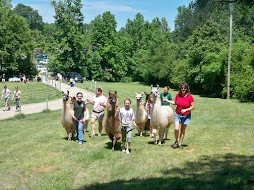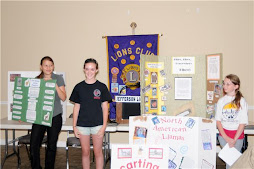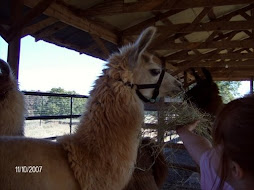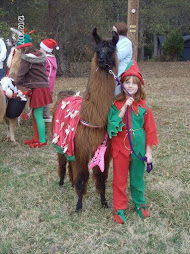TOP TEN list of things to do.
The list is not all inclusive, but theseare some of the most important things we need to do to protect the llamasand alpacas from heat stress before it happens to you !
1. SHEAR - I recommend that all llamas and alpacas be sheared before June 1every year. Barrel cuts seem to work OK, but not shearing is not an option.
2. SHADE - Lots of shade should be available. Most critical is that there isenough shade for ALL of the animals to be shaded at the same time wheneverthey want.
3. VENTILATION - A good breeze is worth a thousand words. The most importantthing is that the wind can get underneath the animals where the "thermalwindow" is located. Fans should blow across the barn at floor level (notdown from a height). Barns should have cross-ventilation so that stagnationdoes not occur in any area.
4. WATER - Clean, plain, fresh water should be available at all times. Watershould be replaced at least twice a day to keep it cool (not cold). Watershould be in the shade and animals should not have to compete for access.
5. BEDDING - Straw is bad in summer. This thick bedding closes off thethermal window and decreases access to ventilation. Sand bedding, especiallyslightly moist, is very good at absorbing heat from the animals. Concrete ishard, but cool and easy to clean and wet down.
6. WADING - I like pools. Llamas and alpacas will seek out puddles, ponds,etc to get cool. This tends to make hair fall out if they lay around inwater too much of the time, but pools are very effective at allowing theanimals to self-regulate temperature. Bad for show season, but good fornon-showers. The pool should be in the shade and freshened daily.
7. MONITORING - Observation is the key to life. Watch your animals. If theyspend a lot of time eating, standing, walking around and being active thenthey are probably happy and healthy. If they lay around most of the day andare not active, then they may have sub clinical heat stress (early stage) andintervention may be warranted. Watch your breeding males very closely. Ifyou see the scrotum getting pendulous, "baggy", or increasing in size, dosomething immediately or you may loose fertility!
8. FEEDING - Eating and digesting hay takes a lot of work and generates alot of heat. Some have suggested that less hay, more grass and grains causeless heat stress risk because heat production from digestion is minimized. Iquestion the application of this concept, but certainly pasture grazing isthe best management style.
9. ELECTROLYTES - I am a big believer in the protective effect ofelectrolytes. I make water available that has salt, potassium, glucose, andbicarbonate in it to help replace losses that occur in sweat and breathing.I am a big believer in the protective effects of a balanced diet. Ofparticular interest for heat stress is that adequate Vitamin E, Selenium,Zinc, and Copper are available.
10. PREGNANCY - I prefer to see females in this area of the country havingcrias in the spring. This optimizes easy re-breeding of females; allowsoptimal lactation because of the nutrition of fresh grass; optimizes criahealth because of sunlight, clean pastures, and good nutrition; and preventsfemales from having to suffer late gestation in the hot summer months.Successful treatment of heat stress depends upon early recognition(increased respiration, lethargy, increased recumbency, decreased appetite,decreased cooperation with or participation in activity, flared nostrils).Most of the above mentioned prevention strategies can be applied astreatment. Consult a veterinarian at the earliest time for animals showingabnormalities of behavior during summer months.
Thursday, June 4, 2009
Subscribe to:
Post Comments (Atom)















































No comments:
Post a Comment